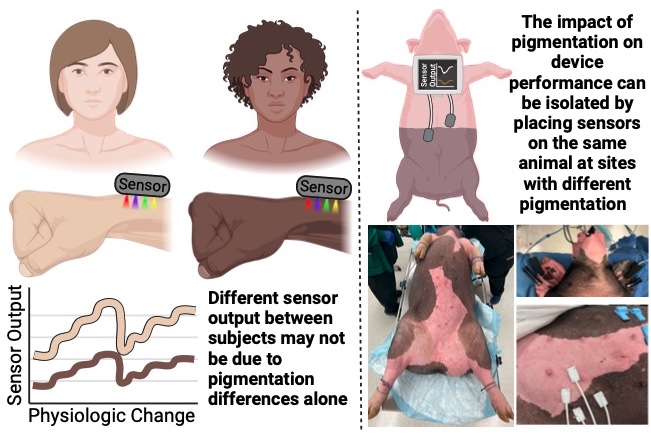Premise
Light-based devices, like pulse oximeters and optical imaging systems, detect light after it interacts with skin. Melanin’s strong optical absorption reduces how much light is detected, and this may cause disparate device performance between lightly and darkly pigmented people. It’s critical that devices work equitably across the full spectrum of pigmentation, but there in an unmet need for a means of device testing where pigment varies while other physiologic variables are constant. We address this need by validating devices in Hampshire swine that have large patches of pigmented and nonpigmented skin.

Placing duplicate devices on differently-pigmented patches in the same animal during validation studies tests impact of pigmentation on device performance while controlling for other physiologic factors. We have applied this approach to test the functionality of tissue oximeters, photoacoustic oximeters, fluorescence guided surgery systems, and pulse oximeters. Our work is supported in part by an NIH R21, where we are exploring both the role of pigmentation and perfusion on pulse oximeter function.